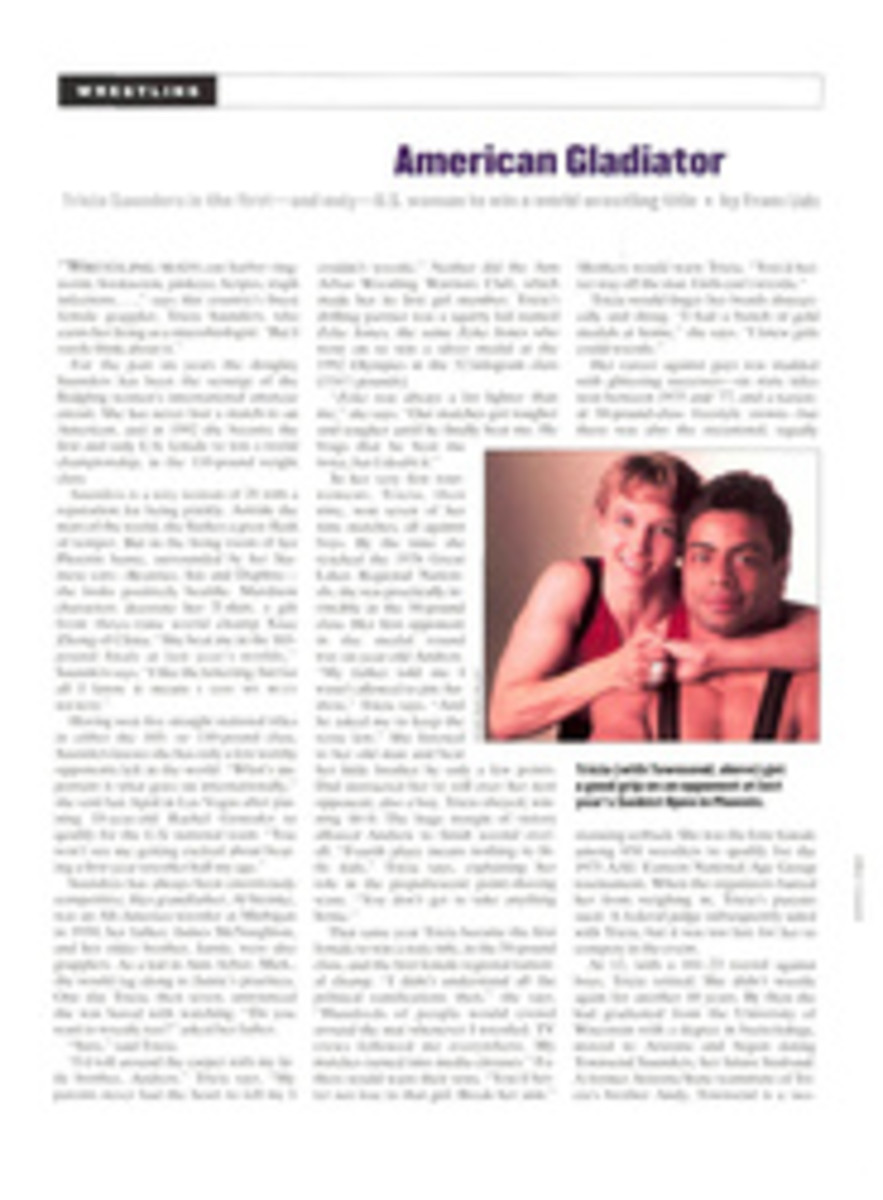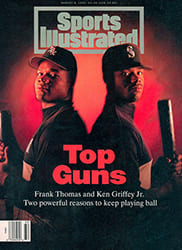
Volleyball with a Kick
Kurt Sonderegger's infatuation began with a ball. In 1987, while taking time off from the University of Maine and working in banking in Switzerland, Sonderegger met a fellow American who showed him a springy, grapefruit-sized ball made of woven strips of rattan. The ball, said the traveler, was from Thailand. Sonderegger, then 21 and a soccer aficionado, was intrigued: He could manipulate the hollow ball with his feet better than any beanbag or air-filled ball. And after his compatriot gave him the object as a gift, Sonderegger became entranced.
"All I knew was that the ball came from Thailand and was fun to kick," says Sonderegger. "But it all sounded exotic: a weird ball, the Far East, an unknown sport. So on a whim I booked a trip to Thailand."
Sonderegger discovered the sport of sepak takraw, usually referred to simply as takraw. (Sepak is Malay for "kick"; takraw is Thai for "woven ball.") On street corners in cities throughout Thailand, he watched groups of people stand in circles and kick takraw balls to one another, performing moves of astonishing dexterity. But Sonderegger had yet to witness the takraw net game.
Wildly popular throughout Southeast Asia, the net game is basically volleyball played with the feet. The playing field is the size of a badminton court and is divided by a 5'1"-high net. Three people play on a takraw team—a server, a setter and a spiker—and the ball can be kicked only twice before it must be sent over the net. As in volleyball, a team scores only when serving. As in soccer, all parts of the body except the hands may be used. A game of world-class takraw seems to defy gravity. Top players perform midair somersaults, kicking the ball when their legs are several feet above the net and then magically gyrating and landing upright. Takraw is lightning fast: A well-kicked spike can accelerate the ball to 90 mph; a good serve can reach 60 mph.
Sonderegger returned to Maine with a load of plastic balls—they tend to keep their shape better than the rattan versions—and the idea of starting a business. He had heard about a takraw team at Northrop University in Los Angeles, and he persuaded his girlfriend, Georgia Flanagan (now his wife), to join him on a takraw mission. "I pointed my VW bus west," says Sonderegger, "and went in search of the game."
L.A.'s Asian community and Northrop's team had created a takraw niche. Sonderegger, who now lives in L.A., founded the U.S. Takraw Association and started a company, Buka, that imports and distributes plastic balls from a Thai factory.
Sonderegger, who had been honing his skills playing with the Northrop contingent, soon received an invitation to compete in the 1989 Sepak Takraw world championships in Bangkok. He put together a U.S. squad that included himself and a few people he practiced with at Northrop and found sponsors among several sportswear manufacturers. "We got blown out of the water," says Sonderegger. "But everyone in Bangkok loved it that Westerners were trying their game."
Determined to increase U.S. awareness of the sport, Sonderegger and a handful of Buka employees decided in 1990 to take the gospel of takraw on the road. In teams of two they embarked on 30-week road trips, visiting elementary, middle and high schools across the U.S. and giving takraw demonstrations. Sonderegger says many of the schools he visited now offer takraw as part of their P.E. programs.
Sonderegger also organizes the U.S. National Takraw Championships (this year's, the fifth, is scheduled for Aug. 20-21 in L.A. and will include 12 teams from California and Colorado) and manages Team USA, which has steadily improved: At the 1993 World Cup in Malaysia, it finished first among a dozen countries in the non-Asia division. Buka now sells 10,000 balls a year (they retail for $14). But Sonderegger still has some unfinished takraw business.
"I'm waiting for the person who gave me that very first ball to get in touch with me," he says. "I owe him a new ball."
PHOTO
MIKE POWELL/ALLSPORT
Eric Barthalmay (left) and Kevin Miller are Californians who are high on the game.

